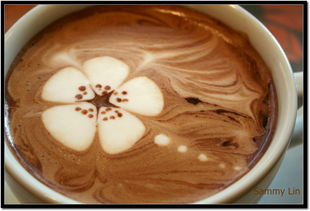How to taste and convey the various characteristics of coffee
In the coffee industry, it is very important to learn how to taste and convey the characteristics of coffee. From the identification of raw and roasted coffee beans to the promotion of coffee beans, you need to know some professional terms about coffee.

In order to popularize the knowledge of coffee appreciation, the American Coffee Special Alliance (Specialty Coffee Association of America,SCAA) has specially produced a coffee aroma-taste roulette to help people understand the two basic characteristics of coffee: aroma and taste.
When testing a cup of coffee, we should distinguish whether the flavor, alcohol thickness, acidity and wet aroma of the coffee are pleasant. Most cup tasters use the following criteria to judge coffee.
Acidity Acidity:
Acidity is an essential feature of coffee and is the feeling of dryness that coffee produces at the edge of the tongue and the back of the palate. The effect of coffee acidity is similar to that of red wine, with a strong and exciting texture. Without enough acidity, the coffee tends to be flat. Acidity is different from sour taste, which is an unpleasant and bad taste feature.
Wet aroma Aroma
The wet aroma is difficult to separate from the flavor. If there is no sense of smell, our basic sense of taste is only sweet, sour, salty and bitter. The wet aroma enriches the taste discrimination of the soft palate. Some subtle and delicate differences, such as the "floral" or "wine" characteristics, come from the wet aroma of brewed coffee.
Alcohol thickness Body:
Alcohol thickness is the feeling of coffee in the mouth, that is, the feeling of stickiness, thickness and richness produced by coffee acting on the tongue. The difference between drinking whole milk and drinking water is a good example. Our perception of the alcohol thickness of coffee is related to the oil and solids extracted by coffee. The alcohol thickness of Indonesian coffee is significantly higher than that of South and Central American coffee. If you are not sure about the alcohol thickness difference of several types of coffee, try adding the same amount of milk to the coffee. Coffee with high alcohol thickness will retain more flavor when diluted with milk.
Flavor Flavor:
Flavor is the overall feeling of coffee in the mouth. Acidity, wet aroma and alcohol thickness are all components of flavor, and it is their balance and homogenization that produce our overall sense of flavor.
Here are some typical flavor features:
General flavor characteristics General flavor characteristics:
Richness-refers to the thickness and richness of alcohol
Complexity-the feeling of multiple flavors
Balance-all basic palate features are satisfactory, and no one taste masks the other.
Pleasing flavor features:
Fresh, bright, dry, light, or lively-(common in Central American coffee):
Caramel-like sugar or syrup
Chocolate-like unsweetened chocolate or vanilla aftertaste
Delicious-delicate flavor felt on the tip of the tongue (Arabica beans from New Guinea)
Earthy-the aroma of the earth (typical Sumatran coffee)
Fragrant-an aromatic quality, ranging from floral to spicy
Fruity-an aromatic quality reminiscent of berries or oranges
Sweet and mellow-round, smooth, lack of acidity
Nutty-- similar to the aftertaste of fried nuts
Spicy-reminiscent of the flavor and aroma of various spices
Sweet-- non-astringent
Wild-A wild flavor that is not generally considered pleasant; common in Ethiopian coffee
Wine-flavored-an aftertaste reminiscent of fully ripe wine (common in Kenyan and Yemeni coffee)
An unpleasant flavor feature:
Bitter-A taste produced at the root of the tongue, often caused by overbaking
Dull, non-irritating-neutral in flavor
Charcoal-smelling of charred carbon
Inanimate-- same as "Flat"
Mixed-smelling-musty, reminiscent of the taste of eating dirt
Earthy-- with "mixed smell"
Insipid-no sour taste, lack of wet fragrance and aftertaste
Grassy-reminiscent of freshly cut grass
Rough-- a harsh, catch-like, rough quality
Muddy-sticky but not strong in taste
Stiff-starch resembles texture, similar to water cooked with pasta
Rough-the feeling on the tongue, similar to eating salt
Rubber smell-similar to the smell of burnt rubber (commonly found in dry processed robusta beans)
Soft-the same as "boring, non-irritating"
Sour-similar to the sour taste of unripe fruit
Thin-acidity-free, usually caused by insufficient extraction
Turpentine-- tastes like turpentine.
Water-like-lack of alcohol thickness and stickiness in the mouth
Rough-wild quality.
Important Notice :
前街咖啡 FrontStreet Coffee has moved to new addredd:
FrontStreet Coffee Address: 315,Donghua East Road,GuangZhou
Tel:020 38364473
- Prev

How do you drink Italian coffee? authentic Italian coffee should be drunk standing up.
If someone has to stand up and drink coffee, don't think he's pretending. He's probably a crook, especially an Italian. In the eyes of Italians, only espresso can be regarded as coffee. If you want to drink coffee authentic, stand with the flag while watching and tasting it. As we all know, Italians love coffee, so cafes are everywhere. But you may not know it.
- Next

Common types, producing areas and characteristics of coffee
With the rapid development of China's economy and the substantial increase in per capita income, people pursue a higher quality of life and a better standard of living. Coffee is a kind of health drink with unique taste, which is loved by consumers, especially middle-aged and young people. With the expansion of coffee consumer groups, coffee culture also came into being, coffee has become an indispensable thing in people's life. Annual coffee consumption in China 4
Related
- Beginners will see the "Coffee pull flower" guide!
- What is the difference between ice blog purified milk and ordinary milk coffee?
- Why is the Philippines the largest producer of crops in Liberia?
- For coffee extraction, should the fine powder be retained?
- How does extracted espresso fill pressed powder? How much strength does it take to press the powder?
- How to make jasmine cold extract coffee? Is the jasmine + latte good?
- Will this little toy really make the coffee taste better? How does Lily Drip affect coffee extraction?
- Will the action of slapping the filter cup also affect coffee extraction?
- What's the difference between powder-to-water ratio and powder-to-liquid ratio?
- What is the Ethiopian local species? What does it have to do with Heirloom native species?

